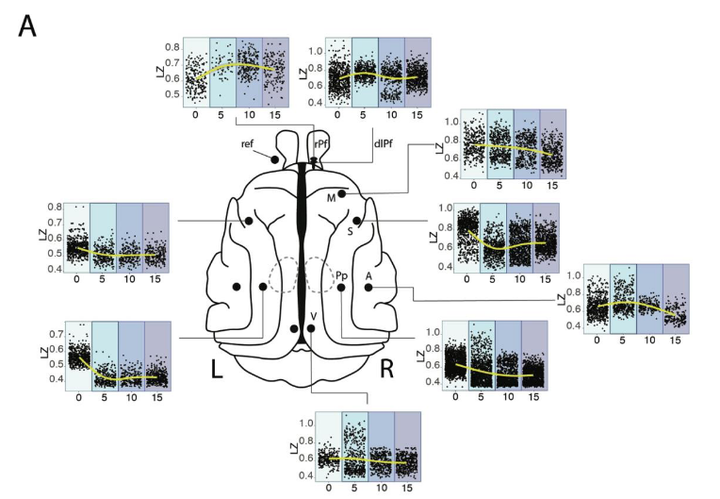
Abstract
There is increasing evidence that level of consciousness can be captured by neural informational complexity: for instance, complexity, as measured by the Lempel Ziv (LZ) compression algorithm, decreases during anesthesia and non-rapid eye movement (NREM) sleep in humans and rats, when compared to LZ in awake and REM sleep. In contrast, LZ is higher in humans under the effect of psychedelics, including subanesthetic doses of ketamine. However, it is both unclear how this result would be modulated by varying ketamine doses, and whether it would extend to other species. Here we studied LZ with and without auditory stimulation during wakefulness and different sleep stages in 5 cats implanted with intracranial electrodes, as well as under subanesthetic doses of ketamine (5, 10, and 15 mg/kg i.m.). In line with previous results, LZ was lowest in NREM sleep, but similar in REM and wakefulness. Furthermore, we found an inverted U-shaped curve following different levels of ketamine doses in a subset of electrodes, primarily in prefrontal cortex. However, it is worth noting that the variability in the ketamine dose-response curve across cats and cortices was larger than that in the sleep-stage data, highlighting the differential local dynamics created by two different ways of modulating conscious state. These results replicate previous findings, both in humans and other species, demonstrating that neural complexity is highly sensitive to capture state changes between wake and sleep stages while adding a local cortical description. Finally, this study describes the differential effects of ketamine doses, replicating a rise in complexity for low doses, and further fall as doses approach anesthetic levels in a differential manner depending on the cortex.